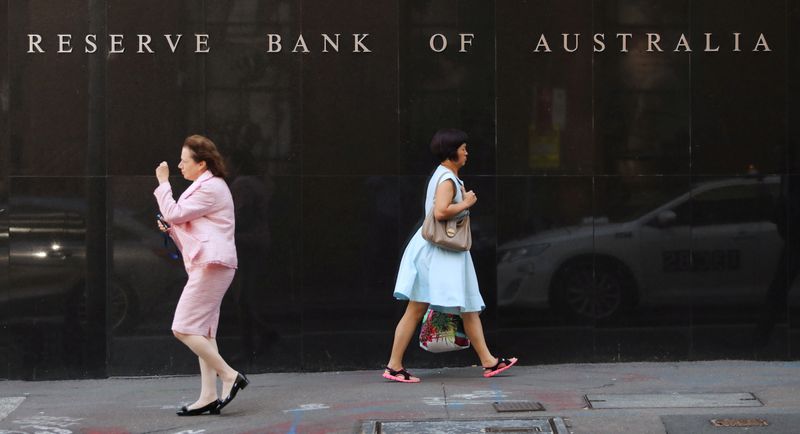Australian central bank reform adds new wrinkle to policy outlook

By Wayne Cole
SYDNEY (Reuters) – Australia’s central bank is finally getting a major shake-up of its policy-making process that adds extra uncertainty to when it might deliver interest rate relief to hard-pressed borrowers.
Long-delayed reforms to the Reserve Bank of Australia (RBA) passed parliament late on Thursday after the ruling Labor government secured support from Greens lawmakers, bypassing objections from the main Liberal National opposition.
The changes, which were recommended by an independent review in 2023, include splitting the current RBA board into two groups with one dedicated to monetary policy and the other focusing on the central bank’s governance and operations.
Analysts are assuming the new monetary policy committee would have some new members, perhaps changing the outlook for interest rate cuts.
The current board has held rates at 4.35% for an entire year and signalled there was little chance of easing in the near term, even as many other developed world peers have slashed rates.
“While our base case remains for the RBA to start cutting rates in February, the changes raise the uncertainty around the RBA’s reaction function going forward given potential new board personnel,” said Goldman Sachs economist Andrew Boak.
The monetary policy committee (MPC) will retain the present structure of six external members appointed by the treasurer and three ‘ex officio’ members comprising the RBA governor, deputy governor and treasury secretary.
Governor Michele Bullock has indicated some of the current board members might move to the MPC and others to the governance committee.
The reforms recommended the new MPC have members with expertise in monetary policy, macroeconomics and the labour market, among other areas. They will formally vote at board meetings and the overall vote will be published, and members might choose to give public speeches.
Speaking at a media conference on Friday, Treasurer Jim Chalmers said the new format would be introduced some time after the RBA’s board meeting on Feb. 18, and likely by March 1.
Chalmers said he would consult with the opposition on his choices for the new board, saying the candidates would be “first class and first rate”.
The opposition had blocked the reforms in part arguing that Chalmers could pick appointees friendly toward the government.
The RBA has already adopted some of the recommendations from the review, including having fewer but longer policy meetings and holding a press conference after each decision.
The central bank will maintain its dual mandate of maintaining price stability and full employment. It aims to keep inflation in a target band of 2%-3% over time, with a focus on the mid-point of 2.5%.
Headline consumer price inflation did slow sharply to 2.8% in the September quarter but mainly due to temporary government rebates on electricity bills.
Core inflation, however, remained stubbornly high at 3.5% and Bullock has repeatedly stated the board will not ease policy until it is confident this measure will return to the mid-point of its 2%-3% target range.




